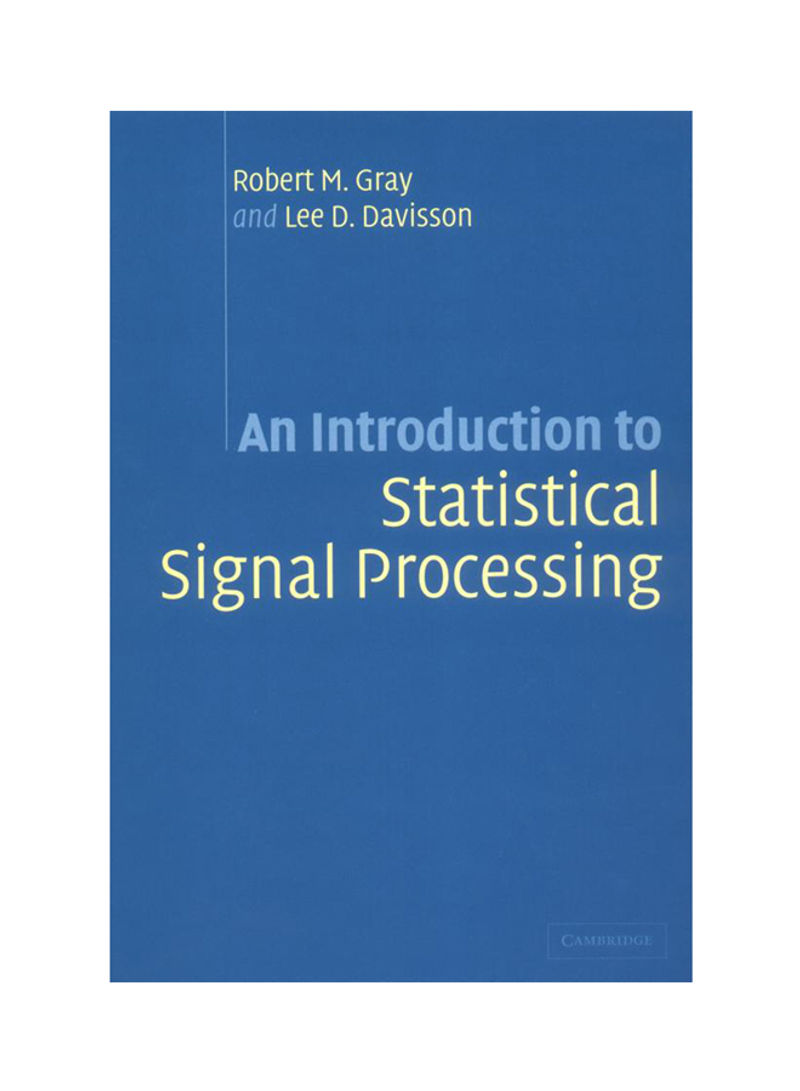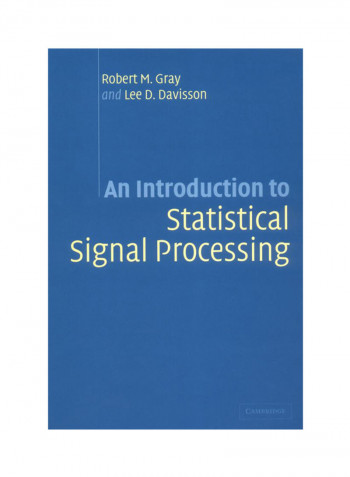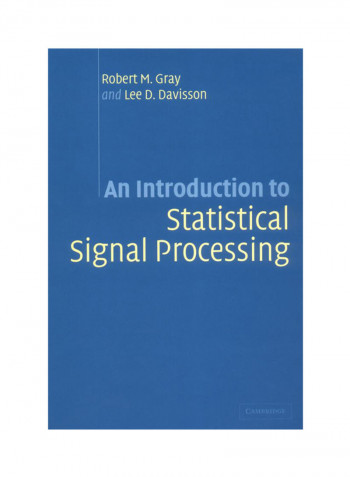An Introduction To Statistical Signal Processing Paperback
Recommend
Sort by
Rating
Date
Specifications
Author 1
Robert M. Gray
Book Description
This book describes the essential tools and techniques of statistical signal processing. At every stage theoretical ideas are linked to specific applications in communications and signal processing using a range of carefully chosen examples. The book begins with a development of basic probability, random objects, expectation, and second order moment theory followed by a wide variety of examples of the most popular random process models and their basic uses and properties. Specific applications to the analysis of random signals and systems for communicating, estimating, detecting, modulating, and other processing of signals are interspersed throughout the book. Hundreds of homework problems are included and the book is ideal for graduate students of electrical engineering and applied mathematics. It is also a useful reference for researchers in signal processing and communications.
ISBN-10
521131820
ISBN-13
9.78052E+12
Language
English
Publisher
Cambridge University Press
Publication Date
18-Feb-10
Number of Pages
478
About the Author
Robert M. Gray received his PhD from the University of Southern California, and is Professor and Vice Chair of Electrical Engineering at Stanford University. He has written over 200 scientific papers in areas including information theory, applied probability, signal processing, speech and image processing and coding, ergodic thoery, and the theory of Toeplitz matrices. He is a Fellow of the IEEE and the Institute of Mathematical Statistics. Lee D. Davisson received his PhD from Princeton University, and is an Emeritus Professor of Electrical Engineering at the University of Maryland, College Park. He is the author or co-author of three books and over one hundred scientific papers. He is a Fellow of the IEEE.
Author 2
Lee D. Davisson
Editorial Review
One of the book's strengths is its thematic focus, guiding the reader on a straight road to mean squared calculus. The authors are careful in not assuming prior knowledge of probability theory or even measure theory, and the text connects readily to undergraduate courses on elementary probability and linear systems. The writing itself is carved in a sequential and elaborate style following the credo of linear development of material. Emphasizing intuitive arguments, the text provides helpful discussions of notions and basic concepts. A wealth of problem questions are proposed. - Journal of the American Statistical Association.



